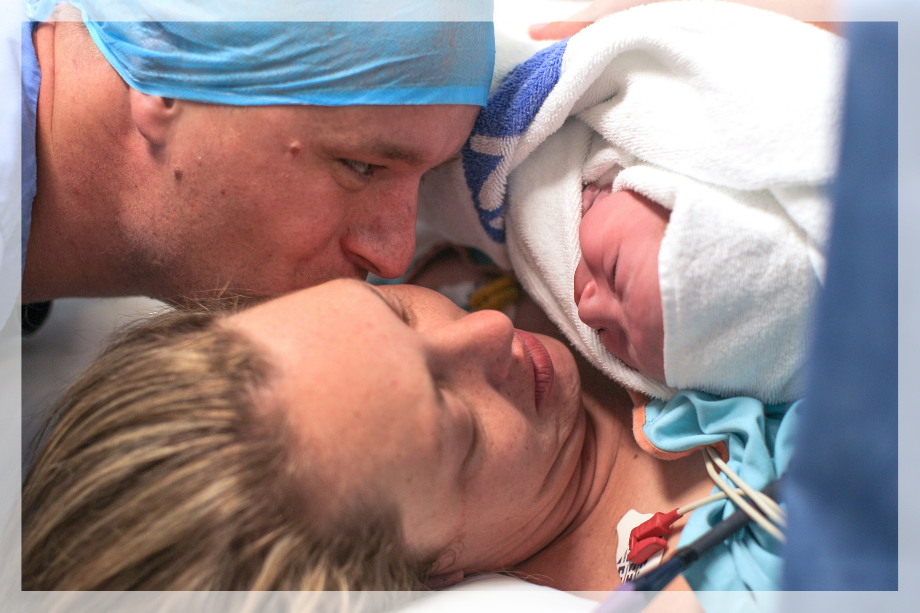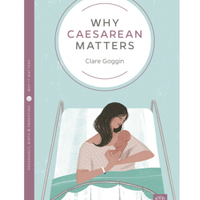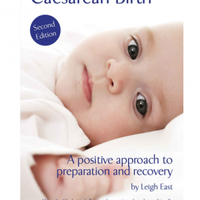Caesarean section: types, delivery, risks and recovery
We explain the different types of Caesarean, the procedure, recovery, scarring, and what the risks are...


A cesarean section is a procedure that allows your baby to be delivered through a cut in your abdomen. Also known as 'c sections', some mothers prefer to call it either an abdominal or surgical birth.
Around 1 in 4 women have a caesarean in the UK. There is a range of reasons you might be advised to have a caesarean or might need one. These can include problems with your health, the health of your baby or risks for you both. You can also decide if you want to have an 'elected caesarean'.
To understand everything you need to know about having a caesarean section, we talked to NHS Consultant Obstetrician and Surgeon, Dr Ihab Abbasi. He told us, "A Caesarean is a safe way to birth a baby, but like all surgeries, it is not without risk. Every birth comes with risk, including vaginal birth. If you want to have a caesarean, then discuss this with your consultant. They will want to discuss everything with you, to know you're fully informed before you go ahead with the operation."
Different types of caesarean sections
A planned caesarean
There are several reasons a doctor may suggest a planned caesarean for your health, or your baby's. This will be recommended when:
- Your baby is in an unfavourable position for birth - this can include breech positions (head up, rather than head down) or if your baby is transverse (laying across your uterus)
- You need to deliver early for your own health - these conditions vary, but gestational diabetes and pre-eclampsia might sometimes mean earlier delivery is better for you
- Baby's exit is blocked by a low-lying placenta - known as placenta previa (which covers your cervix)
- You are expecting multiples (twins or triplets) - twins and triplets can be birthed vaginally, but this will depend on your pregnancy
- Baby is very large (known as macrosomia) - with their growth estimated as bigger than 97% of other babies
An unplanned caesarean
As outlined by the National Institute for Clinical Excellence, you might need an unplanned (emergency) caesarean if:
- Your baby is showing signs of distress
- Your labour isn't progressing and medications to help you give birth (induction methods) have not worked
- Something happens during labour which causes a risk to you, your baby or both of you. Rare examples include uterine rupture (tearing of the womb) or placental abruption (the placenta comes away from the wall of the uterus.
Dr Abbasi, NHS Consultant Obstetrician, explains, "There are a lot of reasons that I might recommend a caesarean, but I'll always discuss all the reasons, risks and benefits with the woman and her birth partner. Whatever the indications for a caesarean, you should have the chance to ask all your questions. Very few times is it the only option, so you can always ask what the alternatives are."
An elected caesarean: can you ask for a caesarean section?
In the UK, and in many other countries, yes you can as for a caesarean. NICE guidelines say that maternal requests for caesarean must be explored, discussed and recorded.
If you request a caesarean your healthcare team will discuss:
- Risks and benefits of caesarean
- Risks and benefits of vaginal birth
- Your personal reasons for requesting a caesarean
- Informed consent and your understanding of the operation
- Recovery from a caesarean
- Impacts on future pregnancies and births
Where your reasons for a caesarean are around anxiety or tokophobia (fear of childbirth), you will be offered a referral to a perinatal mental health professional.
However, this does not mean you have to take that offer of help, nor that you cannot have a caesarean. Dr Ihab Abassi explains: "If your healthcare team don't agree with your request, that doesn't mean you can't have a caesarean. NICE guidelines say that they must refer you to another obstetrician that will perform your caesarean. I haven't ever turned someone down. It's not me who is going through this - it's the patient. My job is to make sure she understands everything that's involved. If she's giving truly informed consent, that's what is important."
NICE Guidelines on Caesarean, UK - "If a vaginal birth is still not an acceptable option after discussion of the benefits and risks and offer of support (including perinatal mental health support if appropriate; see recommendation 1.2.28), offer a planned caesarean birth for women requesting a caesarean birth"
Cesarean delivery: How to prepare for c-section
In the weeks leading up to a planned caesarean, you will be given the opportunity to discuss all your concerns with your midwife and ask several questions about what's involved. Keep a note of any questions you have, and save them for your later antenatal appointments. It's likely you will have some pre-operative instructions, which vary by hospital, and you might need to have some routine blood tests, too.
Just because you're having a caesarean, doesn't mean you can't think about a birth plan. Some things might be already mapped out, but you can still choose many things.
- Who to have with you in the theatre
- Your playlist - some theatres have a sound system so you can birth your baby to your favourite album.
- Whether you want immediate skin to skin after birth, or for your birth partner to hold baby (this may depend on your hospital and reasons for caesarean. Discuss with your healthcare team).
- How much information your theatre team give you - do you want a running commentary, explaining all? Or would you prefer silence as baby is born, so they hear your voice first?
- If you'd like to see baby's birth. Some hospitals allow a mirror or lowering of the drapes so you can witness the birth.
Consultant Obstetrician Dr Abassi says, "Follow all your pre-operative advice and read all the information you're given. But also think about what parts you'd like to remember from your baby's birth. Bring some music and your camera - usually one of the team will be happy to take photos of you, your birth partner and your baby. Even if it's an emergency, in most cases."
Kelly, mum of three - "All I could remember from my midwife friend is ‘a hydrated uterus is an effective uterus’ so I was guzzling fluids like no tomorrow before hand. I recovered so well from it that they were really surprised. One midwife told me afterwards that they’d started trialing fluids before to help recovery and it had reduced recovery times in planned sections. I’m convinced that helped me. -
Before the day of your planned caesarean, you'll have the opportunity to discuss various aspects of what to expect with your healthcare team. Sometimes you might even be offered the opportunity to meet an anaesthetist in their clinic. This will depend on when the decision to have a caesarean is made.
On the day of your planned caesarean, you will be given a consent form that will detail the surgery as well as the risks. You will also meet your surgeon and your anaesthetist before you see them in theatre. It's also important to note you will need a urinary catheter inserted into your bladder before a caesarean.
Written by NHS worker Clare Goggins, who has had two c-sections, and part of Pinter & Martin’s, Why It Matters series. This book outlines what to expect, for the most positive birth.
Non-judemental, honest and empowering book, with lots of practical and emotional advice. Wriiten by mum Leigh East, who had a planned c-section 39 weeks and went on to found csections.org
Caesarean operation: What happens during the procedure?
Before the caesarean operation, you will need to be anaesthetised (for pain relief). There are a few different options and your anaesthetist will explain them to you.
Anaesthesia options include:
- Spinal anaesthesia
- Epidural anaesthesia
- Combined spinal and epidural anaesthesia
- General anaesthetic (in rare cases, where this is absolutely necessary. General anaesthesia will mean you are unconscious when your baby is born.)
Exactly which pain relief is right for you will depend on the reason for your caesarean and whether it's a planned or emergency procedure.
Once the team are confident you cannot feel it, the surgeon will make an incision (cut). This cut is made about 3cm above the area called the symphysis pubis (just above your bikini line).
You will be able to feel some movement inside you, though there shouldn't be any pain. Once the baby is out and safe in your (or your partner's) arms, the surgeon will remove your placenta. A midwife will usually inspect it to make sure it's complete and nothing has been left behind.
Dr Ihab Abbas explains, "We cut the skin and then the layers underneath to reach the womb. We'll then break the waters and you might hear some suction noises as we remove the fluid. Then we take your baby out. We delay cord clamping - I tend to leave it until the cord has stopped pulsating, so all the blood from the placenta goes back into the baby. Then we clamp and cut (or the partner cuts the cord if preferred). The midwife will check the placenta while we check the womb and ovaries. Then we close up and it's done."
Caesarean section recovery
Recovery from a caesarean section is different for everyone. It can also depend on whether you had a planned or emergency caesarean. You will need to take it easy for several weeks, so it's useful if friends and family can provide assistance as much as possible.
Following the procedure, you will be taken to the recovery area so that you can be monitored for a few hours, before moving to the postnatal ward. After 12 hours, your urinary catheter will be removed. You will then be encouraged to get up to the toilet yourself and let midwives know you've managed an independent wee. They want to check that your bladder is working as it should, as studies show catheters can sometimes cause urine retention.
Many hospitals now prefer to use the "advanced recovery" pathway. This means you will return home the day after your operation if you and baby are well. Your dressing will usually be removed around 24 hours after your caesarean.
Medication following a caesarean
Pain killers - While in hospital, you will have access to a greater amount of pain relief than at home. You may be offered opiate medication, like morphine, that can help with initial pain relief. You can also have paracetamol in hospital, and at home.
Blood-thinning medications (to prevent blood clots after a caesarean) - These are usually recommended to protect you from the risk of deep vein thrombosis (DVT) and pulmonary embolism (PE). DVTs are blood clots that usually form in the legs, due to inactivity. They can cause PEs; blood clots in the lungs. Both conditions can be damaging and, in some cases, PEs can be fatal.
Source: Royal College of Obstetricians and Gynaecologists
Real mums words of advice on caesarean recovery
Danielle, who has two children told us - 1. Take your own pillow in. Not just for comfort - I slept almost entirely upright so the extra pillow really helped. 2. Get up and moving ASAP. I had my daughter at midday and was up in the shower at 7pm, as soon as the numbness had worn off. 2. Don't overdo it though: I did and then crashed majorly and was a shaking, sicky mess for a few hours. Vomiting after surgery isn't fun. At all. Little and often was the key for me.
Amy, a mum of two, told us, "Take a pillow with you for the way home. The car journey home can be quite uncomfortable, so hold it against your stomach for any speed bumps. Same when you go for a poo, sneeze or cough. You might feel great about a week later and think you are back to normal. But don't be tempted to do too much. It's major surgery and should be treated as such."
Mum of three, Danielle, told us, "On the subject of painkillers, don't be a trooper. It's major abdominal surgery. Take the medication and take it all, exactly when you should for as long as you need it."
How long does a caesarean scar take to heal?
The actual scar on your skin doesn't take long to heal. Your stitches will be removed within 5 days, but NHS Obstetric Consultant Dr Ihab Abbas says the actual wound will heal "within 48 hours".
Overall recovery takes longer because internal healing will take weeks. The length of time that you need to heal internally will depend on many factors including:
- Whether the operation was complicated or straightforward
- If your caesarean was an emergency or planned
- How long you usually take to heal
What are the risks of caesarean section?
Risks to the mother can include:
- Wound site pain for 1-10 days after surgery
- Infection - this is common after caesarean and can take days to weeks to heal
- Development of blood clots (DVT) in the legs that can travel to the lungs (known as Pulmonary Embolism/PE)
- Needing to have another Caesarean with subsequent pregnancies
Rare complications of caesarean
- Damage to your bowel or bladder
- Total hysterectomy (removal of the womb - an extremely rare complication)
- Scar adhesions (internal scar tissue)
- Placenta accreta (where the placenta embeds too deeply, sometimes within the previous caesarean scar)
- Uterine rupture in future pregnancies (tear in the womb)
Risks to the baby can include:
- Temporary breathing difficulties - babies are not "squeezed" during caesarean section in the way they would be during vaginal birth. This means that the amniotic fluids can get stuck in their airways and they may need some help to breathe. This is something your paediatric team will be expert in resolving, so don't worry too much if your baby needs a little assistance to begin with.
- 1% to 2% of babies will be cut during a caesarean. The cut is not usually deep and usually heals without leaving any visible scar.
Risks section source: RCOG patient advice on Caesarean section
Birth and pregnancy after a caesarean section
You may be wondering how soon after a caesarean you should wait before having another baby. The answer is that it depends on you, your body and your previous caesarean(s).
The NHS does not have any specific recommendation on the spacing between pregnancies, so this should be a discussion between you and your GP. They will understand your health factors and considerations.
Studies suggest that waiting at least 12 months between pregnancies is best for reducing overall risks to both mother and child.
Many people think that having a caesarean will mean all subsequent births will have to be Caesarean sections. However, this is not the case for all women. Many women will be able to have a Vaginal Birth After Caesarean (VBAC).
If you are worried about giving birth next time, speak to your obstetrician or midwife about how it will affect your next birth.
Related video: Our favourite twin baby names
GoodtoKnow Newsletter
Parenting advice, hot topics, best buys and family finance tips delivered straight to your inbox.

Tannice Hemming has worked alongside her local NHS in Kent and Medway since she became a parent and is now a mum of three. As a Maternity Voices Partnership Chair, she bridged the gap between service users (birthing women and people, plus their families) and clinicians, to co-produce improvements in Maternity care. She has also worked as a breastfeeding peer supporter. After founding the Keep Kent Breastfeeding campaign, she regularly appears on KMTV, giving her views and advice on subjects as varied as vaccinations, infant feeding and current affairs affecting families. Two of her proudest achievements include Co-authoring Health Education England’s E-learning on Trauma Informed Care and the Kent and Medway Bump, Birth and Beyond maternity website.

